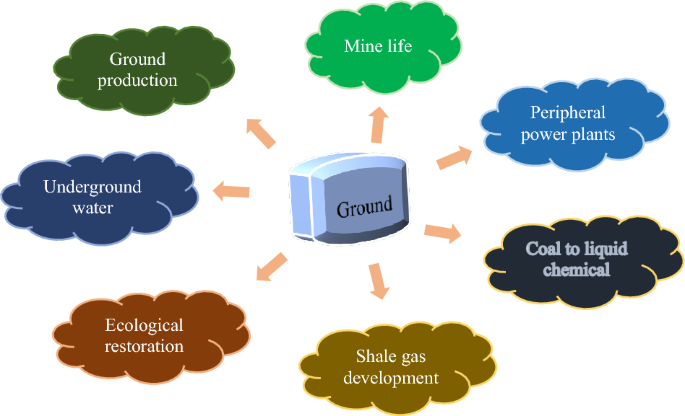The construction of mine water recycling performance evaluation index system under the Internet of Things environment - Scientific ReportsAbstra...
Published on by Water Network Research, Official research team of The Water Network

Abstract
The utilization rate of water resources of mines in China is still relatively low. The evaluation of mine water recycling has practical guiding significance for the planning, positioning, development, and construction of groundwater in today’s society. This article constructs an evaluation system for mine water recycling based on the key performance index (KPI) via the Internet of Things and big data platforms. This system evaluates the recycling status of mine water. First, the micro-seismic monitoring system and the hydrological dynamic detection system are deployed in work. The installation and debugging methods are compared to meet the monitoring requirements. Second, the filtered clear water is used for equipment cooling and firefighting dust removal at the mining face through the constant pressure supply pump. The excess clear water is discharged to the surface. Finally, 16 indicators are screened from four dimensions to construct a key KPI mine water evaluation system for evaluation and optimization. The results demonstrate that the first mine water monitoring system runs well and is fully functional, achieving the expected goal. The utilization rate evaluation score has increased yearly, from 3.05 points in 2016 to 3.39 points in 2020. However, the per capita utilization rate score still needs improvement. It is essential to improve the rationality of development and utilization.
Introduction
The treatment of mine water in China commenced in the mid-1980s and has since witnessed remarkable progress and technological advancements. Currently, the majority of registered mining enterprises nationwide, with the exception of a few water-free mines in the northwest region, have established and operated mine water treatment systems. Based on incomplete statistics and estimates, the total treatment capacity for various types of mine water in the country exceeds 5 billion cubic meters per year. With the exception of a few mines employing pre-drainage or underground diversion measures, enabling direct discharge of clean mine water, most mines necessitate water quality treatment1. Achieving comprehensive recycling and utilization of mine water has become an essential aspect of cost reduction and efficiency enhancement in mine operations. As a result, ensuring efficient and cost-effective comprehensive utilization of mine water poses a significant challenge for mine management and technical personnel.
Since the introduction of the Internet of Things (IoT) concept, substantial theoretical advancements have been made, and significant economic and social benefits have been realized through its application in various domains, including transportation, logistics, electricity, healthcare, agriculture, and urban management. Drawing inspiration from the extensive implementation of the IoT, the concept of smart water management, referred to as “Smart Water Conservancy”, has emerged to address the needs of mine water resource supply, demand, and distribution2. However, mine water differs from logistics, and the dual depiction of water flow concerning “field” and “quality” traditionally renders water networking more intricate and challenging in comparison to the IoT. Smart water management, based on IoT principles, enables real-time perception, process tracking, and dynamic simulation of the complete mine water circulation process. By integrating information fusion and data mining of both market water networks and physical water networks, it optimizes the allocation and intelligent supervision of mine water resources, thereby enhancing the efficiency of mine water utilization3.
This article aims to propose a comprehensive and universally applicable performance evaluation index system for mine water circulation, guided by the concepts of a healthy city and mine water circulation. By utilizing detailed, quantifiable, and widely applicable performance evaluation indicators, the article adheres to the principle of performance assessment and seeks to establish a generalized evaluation system. Firstly, this article elucidates the operation of existing microseismic monitoring systems and hydrological dynamic detection systems. Secondly, the filtration process is accomplished by leveraging the water storage capacity of goafs and the height difference of tunnels, facilitating the natural flow of wastewater within goafs. The filtered clean water is then utilized for equipment cooling and fire dust removal in the mining working face using a constant pressure water supply pump, while any excess clean water is discharged to the surface. Finally, 16 key performance indicators (KPIs) are selected from four dimensions: ecological level, water resource abundance, water resource quality, and water resource utilization. These indicators form the evaluation system for mine water circulation, serving the purpose of assessment and optimization.
Attached link
https://www.nature.com/articles/s41598-023-37224-8Taxonomy
- Mine Water Management
- Internet of Things (IoT)
- Narrowband IoT (NB-IoT)